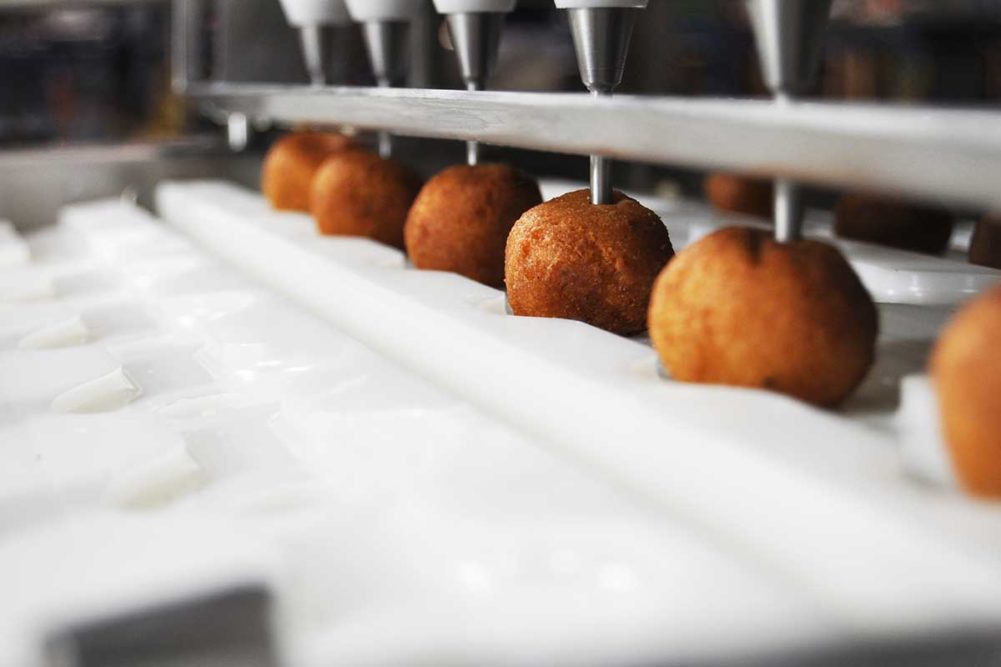Consumers are devouring donuts in droves, delivering rapid growth to the category.
Center-store, full-size donut sales rose 21% to $1.93 billion for the 52 weeks ended Dec. 4, according to Circana. And while many baked good categories have seen unit sales dip due to inflationary pressures on consumers, donut unit sales jumped 7% to 696 million.
While this is great news for yeast-raised donut producers, this rising demand can put a strain on their production as they look to increase throughput amid continued labor shortages.
For bakers grappling with these challenges, automation can be the key to keeping donut production going strong.
“Automation is proving to be a game-changer in tight labor markets by ensuring that production lines can be staffed efficiently and production goals can be met,” said Ty Sarajian, president of Axis Automation. “Beyond labor savings, many companies are also experiencing benefits in quality improvements and reduced waste.”
Automation can simplify donut production at every step, but implementing it may be far from simple if done without the necessary preparation. Mr. Sarajian noted formulations will likely perform differently in automated systems compared to more manual operations.
“This calls for close attention to be paid to the behavior of the formulations in an automated environment,” he said.
Labor savings in every step
Today there are more opportunities than ever for donut producers to reduce labor needs through automation.
“Everything from ingredient filling to processing can be processed in an automated system, reducing labor to an absolute minimum and therefore reducing errors,” said Ken Weekes, international sales manager, WP Bakery Group USA.
For example, yeast-raised donut makers may find some of the biggest labor savings in the mixing room, noted Jeff Dearduff, regional sales manager, Fritsch Bakery Technologies, part of the Multivac group.
“Making the move from manual pre-scaling of ingredients to an automated system is the best way to reduce the human component, and it improves consistency and reduces mistakes,” he said. “Both equal better quality in the finished product.”
Side loading or auto-fill flour dusters also eliminate labor while ensuring an even distribution of flour dust, a critical step in producing consistent, high-quality donuts down the line, said David Moline, vice president of sales and marketing for Moline Machinery. He noted these dusters can be especially advantageous on wider, high-capacity lines.
“They can be an ergonomic advantage when compared to a standard flour duster so that operators don’t have to reach across the width of the line,” he said. “Our side load dusters can be an economic solution for operators if it’s not an automatic fill.”
He added that Moline Machinery’s side load dusters can be integrated with bulk flour systems so that manual filling of flour dusters isn’t required.
“It’s fully automated,” Mr. Moline said. “The dusters will signal when they need more flour and call for more, and it will fill itself with the fully automated system.”
Nick Magistrelli, vice president of sales, Rademaker USA, said one of the simplest ways to reduce labor in the donut production process is the automation of dough handling as it’s transferred to the sheeting line. Rademaker offers semi- and fully automated donut lines that produce a variety of shapes, including round, hexagonal, Bismarks and more.
“On yeast-raised donut lines, another key area to reducing labor is to implement hole removal systems on ring donuts,” Mr. Magistrelli said.
Mr. Moline echoed this point, noting that trim dough is an essential ingredient to premium yeast-raised donuts that enhances flavor. Moline Machinery provides automated trim management systems that ensure the proper amount is incorporated back into the line. This is critical as the proper amount of trim dough can vary based on the specific product.
“We can supply systems that automatically remove the trim dough, whether it’s the holes from the donuts or trim webbing, get that back to the mixer, and it can be automatically scaled, weighed and batched into the mixer without any kind of operator intervention,” he said.
Other opportunities for labor savings down the line include automated loading of proofers and fryers, said Alan Craker, director of sales and business development, Belshaw. The company’s VMRF extruder for yeast-raised donuts, for example, automatically deposits donuts directly into proofer baskets. Belshaw also recently introduced its CRS submerging system, which automates the frying of yeast-raised donut holes and other products that require submersion, Mr. Craker added.
“This has historically been a very labor-intensive process,” he said.
While many steps of donut production are primed for automation, the end of the line, including finishing, filling and decorating, has been more difficult.
“In the past, donut decorating and finishing operations have been heavily reliant on manual labor, with even simple tasks like icing or filling requiring a disproportionate number of skilled workers,” Mr. Sarajian pointed out. “Creating more intricate designs or using specialized toppings has only further increased the need for skilled labor.”
However, the latest technologies are allowing donut makers to automate even these more manual processes.
“With fully automated decorating operations, including half-icing, filling (by top, side or bottom injection), targeted toppings, drizzle patterns and even custom designs, the need for skilled labor has been significantly reduced,” he said.
Sonia Bal, director of global marketing, Unifiller, said the company offers both stand-alone and in-line systems for automated and accurately portioned finishing and filling.
“We offer machines that can inject, enrobe, drizzle, sprinkle and decorate donuts,” she said. “Most of the technology removes the guesswork for donut producers. Deposits, injections and decorations are standardized to reduce product waste and human effort, while ensuring a consistent tasting donut.”
This article is an excerpt from the June 2023 issue of Baking & Snack. To read the entire feature on Donut Processing, click here.





